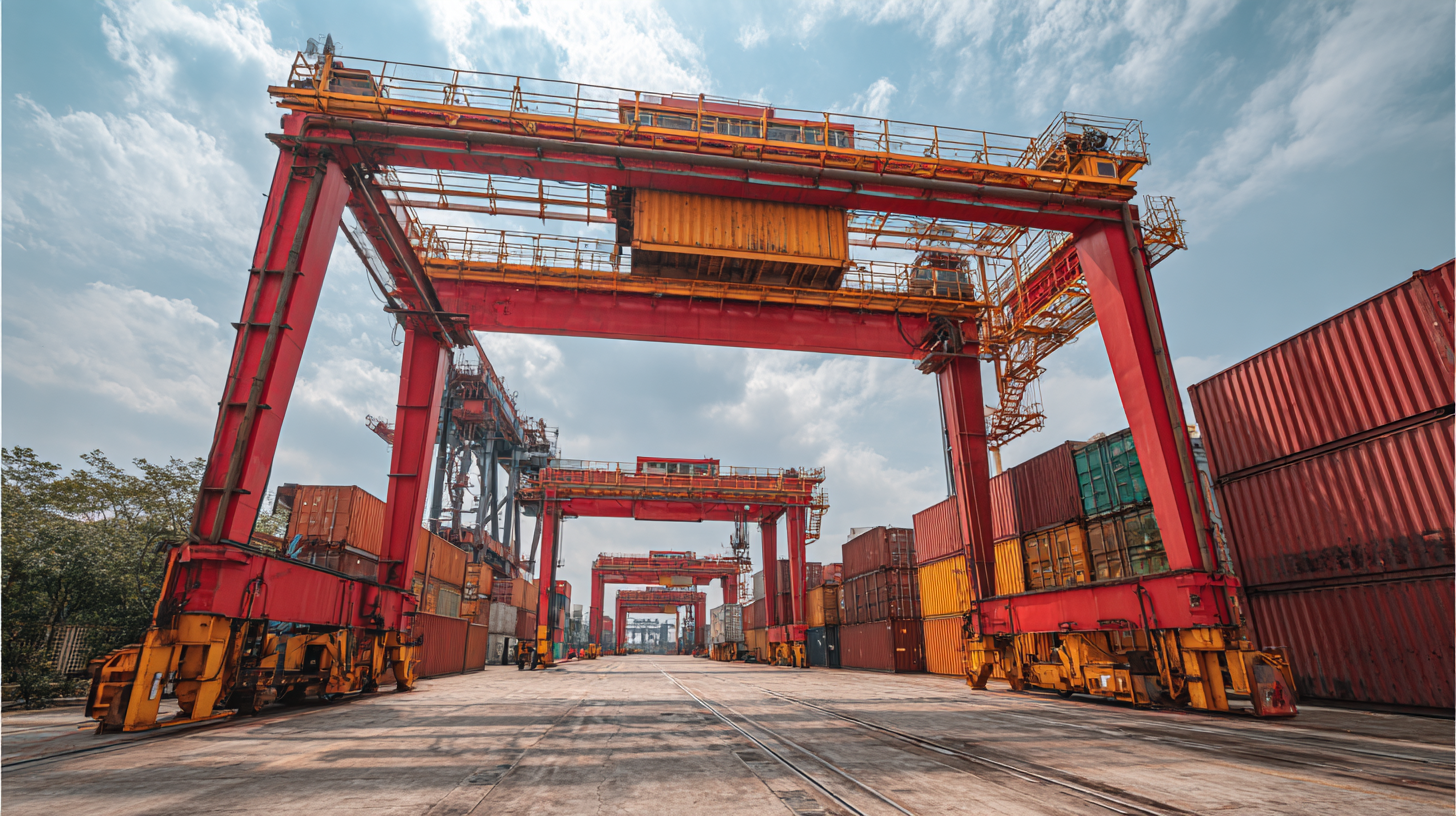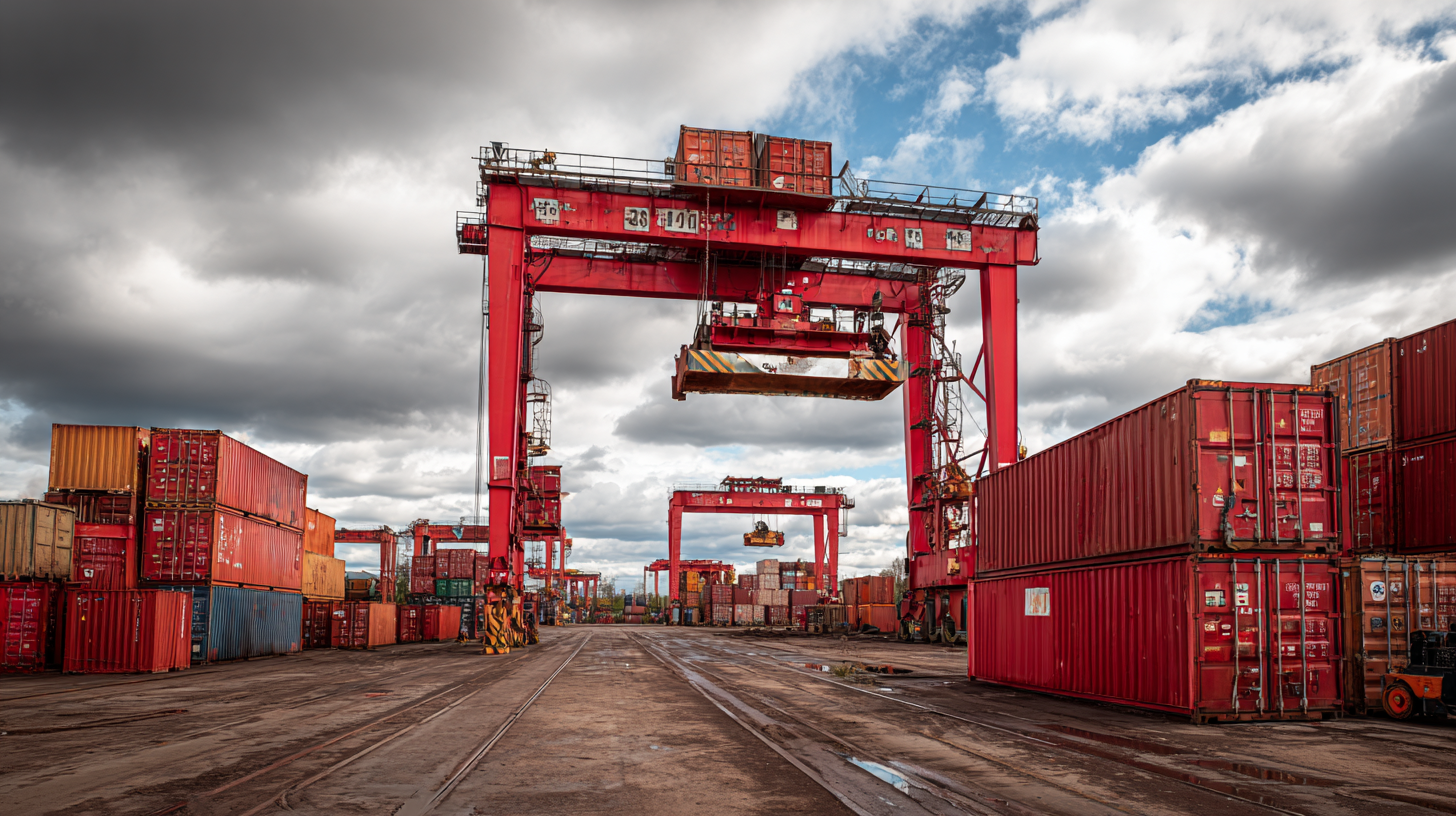Inquiry
Form loading...
-
Phone
-
Wechat

-
Whatsapp

In today's rapidly evolving logistics and shipping industry, the Container Gantry Crane has become an indispensable asset for facilities aiming to enhance their operational efficiency and productivity. According to a recent report by the International Maritime Organization (IMO), global container traffic is projected to reach 1.2 billion TEUs by 2027, highlighting the critical need for advanced material handling equipment. As facilities strive to optimize their workflows and reduce turnaround times, selecting the right Container Gantry Crane is essential. The crane's design and capabilities directly influence loading and unloading processes, ultimately affecting the overall competitiveness of shipping operations. With advancements in technology and the increasing demand for automation, understanding the intricacies of these cranes is paramount for decision-makers in the logistics industry, ensuring that they not only meet current demands but also future-proof their operations against an ever-evolving maritime landscape.

When selecting a container gantry crane for your facility, there are several key factors to consider that can significantly impact your operations.
 First and foremost, you must assess the lifting capacity required for your specific tasks. This involves analyzing the weight of the containers you’ll be handling, as well as considering future growth in your operations.
It’s essential to choose a crane that not only meets your current lifting needs but also accommodates potential increases in load requirements.
First and foremost, you must assess the lifting capacity required for your specific tasks. This involves analyzing the weight of the containers you’ll be handling, as well as considering future growth in your operations.
It’s essential to choose a crane that not only meets your current lifting needs but also accommodates potential increases in load requirements.
Another crucial factor is the crane's span and height. The span should be able to cover the entire area where containers will be loaded and unloaded, while the height must allow for the tallest containers in your inventory.
It’s important to carefully measure your facility’s dimensions before making a decision.
Tip: Always account for any obstructions like overhead utilities or existing structures that could impede the movement of the gantry crane.
Additionally, consider the crane's mobility and maneuverability. Fixed cranes may be suitable for some operations, but portable or semi-portable cranes can provide more flexibility, especially in dynamic environments.
Tip: Evaluate whether your operations would benefit from a rail-mounted system, which can facilitate smoother movements across larger distances, improving efficiency.
When considering the optimal container gantry crane for your facility, it's essential to understand the various types available and their specific applications. Among the most prevalent are Rubber Tyred Gantry (RTG) cranes and Rail Mounted Gantry (RMG) cranes.
RTG cranes are favored for their flexibility and ability to operate in confined spaces, making them ideal for smaller terminals. Conversely, RMG cranes are noted for their stability and efficiency in larger operations and are commonly used in major container ports to handle high volumes of containers quickly and effectively.
Recent advancements in gantry crane technology have led to the introduction of automated systems that enhance operational efficiency. For instance, fully automated container gantry cranes have started to gain traction in facilities such as the Container Terminal Altenwerder, where their remote-controlled capabilities streamline container handling processes. Additionally, as reported, the global market for gantry cranes remains robust, with China leading exports, valued at $116 million in 2019. This indicates a growing demand in the industry for innovative solutions that improve productivity and safety in container handling operations.
When selecting a container gantry crane for your facility, evaluating load capacity is paramount. Load capacity refers to the maximum weight the crane can safely lift, which varies significantly among different models. To ensure optimal operational efficiency, it’s essential to choose a crane that matches your specific lifting requirements. Overloading a crane not only poses safety risks but can also lead to increased wear and tear, resulting in higher maintenance costs and potential downtimes. Thus, a thorough analysis of your typical load weights and an understanding of the crane's specifications will help in making the right decision.
Operational efficiency is equally important when choosing a gantry crane. An efficient crane minimizes cycle times and maximizes throughput, which is crucial for maintaining workflow in busy facilities. Look for features such as variable speed controls, robust lifting mechanisms, and ergonomic design, which contribute to faster and smoother operations. Additionally, consider the crane's integration with other facility systems and any automation capabilities that can enhance performance. A well-selected gantry crane not only boosts productivity but also ensures a safer working environment, making it a vital asset for any facility.
| Model | Load Capacity (Tons) | Span (Meters) | Lifting Height (Meters) | Operational Efficiency (%) | Power Source |
|---|---|---|---|---|---|
| Gantry Crane A | 10 | 15 | 12 | 85 | Electric |
| Gantry Crane B | 20 | 18 | 10 | 90 | Diesel |
| Gantry Crane C | 15 | 20 | 14 | 88 | Electric |
| Gantry Crane D | 25 | 22 | 15 | 92 | Hybrid |
| Gantry Crane E | 30 | 25 | 18 | 94 | Electric |
Maintaining a gantry crane is crucial for ensuring its longevity and optimal performance. According to a report by the Crane Manufacturers Association of America, regular maintenance can increase crane life expectancy by up to 30%. Routine inspections and timely repairs help identify wear and tear before they evolve into significant issues.
Tip 1: Schedule monthly inspections focusing on critical components like the hoist, wheels, and electrical systems. This proactive approach can prevent costly downtime and extend the operational lifespan of the crane.
In addition to inspections, proper lubrication of moving parts is essential. The American Society of Mechanical Engineers recommends using the manufacturer's specific lubrication guidelines to avoid friction-related failures.
Tip 2: Implement a consistent lubrication schedule. Ensure that joints and bearings are greased every few months to maintain smooth operation and reduce wear.
By prioritizing maintenance protocols, facilities can enhance safety, reduce operational costs, and maximize the lifespan of their gantry cranes, ultimately contributing to a more efficient workflow.

The future of container gantry crane technology is poised for remarkable advancements, driven by innovation and the increasing demands of global logistics. Emerging trends indicate a significant shift towards automation, with cranes equipped with advanced sensors and AI systems to enhance operational efficiency. These smart cranes can optimize loading and unloading processes, reducing downtime and minimizing human error. The integration of Internet of Things (IoT) technology enables real-time monitoring of crane performance, providing operators with valuable insights to maximize productivity.
Additionally, sustainability is becoming a pivotal focus in the design of container gantry cranes. Manufacturers are increasingly adopting eco-friendly materials and energy-efficient systems to reduce the environmental impact of heavy machinery operations. Future models are likely to feature hybrid power systems, blending electric and diesel power, which not only decrease greenhouse gas emissions but also cut operating costs. The adaptation of renewable energy sources, such as solar panels, is also anticipated, aligning with global sustainability goals and the push for greener industrial practices.
